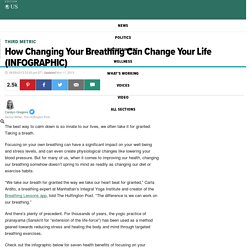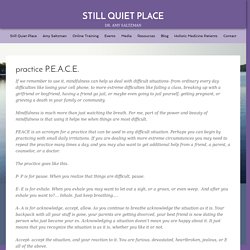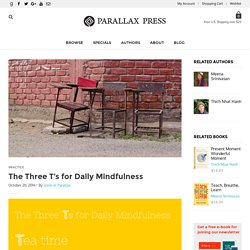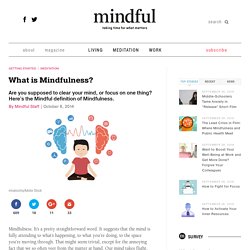

How Changing Your Breathing Can Change Your Life (INFOGRAPHIC) The best way to calm down is so innate to our lives, we often take it for granted: Taking a breath.

Focusing on your own breathing can have a significant impact on your well-being and stress levels, and can even create physiological changes like lowering your blood pressure. But for many of us, when it comes to improving our health, changing our breathing somehow doesn’t spring to mind as readily as changing our diet or exercise habits. “We take our breath for granted the way we take our heart beat for granted,” Carla Ardito, a breathing expert at Manhattan’s Integral Yoga Institute and creator of the Breathing Lessons app, told The Huffington Post.
“The difference is we can work on our breathing.” And there’s plenty of precedent. Check out the infographic below for seven health benefits of focusing on your breathing. Infographic by Jan Diehm for the Huffington Post. This story appears in Issue 66 of our weekly iPad magazine, Huffington, in the iTunes App store, available Friday, Sept. 13.
7 Things Mindful People Do Differently Every Day and How to Begin Now! How to Live More Mindfully. Still Quiet Place. If we remember to use it, mindfulness can help us deal with difficult situations- from ordinary every day difficulties like losing your cell phone, to more extreme difficulties like failing a class, breaking up with a girlfriend or boyfriend, having a friend go jail, or maybe even going to jail yourself, getting pregnant, or grieving a death in your family or community.

Mindfulness is much more than just watching the breath. For me, part of the power and beauty of mindfulness is that using it helps me when things are most difficult. PEACE is an acronym for a practice that can be used in any difficult situation. Perhaps you can begin by practicing with small daily irritations. If you are dealing with more extreme circumstances you may need to repeat the practice many times a day, and you may also want to get additional help from a friend, a parent, a counselor, or a doctor. The practice goes like this. P- P is for pause. E- E is for exhale. The Three T's for Daily Mindfulness – Parallax Press. When I run workshops with Indian teachers, I usually give them my “Three Ts,” which are Tea time, Transitional time, and Toilet time.

I invite teachers to engage in mindful breathing and mindful drinking whenever they drink tea, since taking a chai break in India is a part of their everyday routine. I also taught them the gatha for drinking tea, “This cup of tea in my two hands, mindfulness held perfectly. My mind and body dwell in the very here and now.” In the United States, we could say the same for each coffee break or visit to the water cooler. Transitional time refers to all the time we spend waiting, in line, in traffic, and so on. On a busy day, time on the toilet may be the only break you get. What is Mindfulness? Mindfulness.

It’s a pretty straightforward word. It suggests that the mind is fully attending to what’s happening, to what you’re doing, to the space you’re moving through. That might seem trivial, except for the annoying fact that we so often veer from the matter at hand. Our mind takes flight, we lose touch with our body, and pretty soon we’re engrossed in obsessive thoughts about something that just happened or fretting about the future. And that makes us anxious. Mindfulness is the basic human ability to be fully present, aware of where we are and what we’re doing, and not overly reactive or overwhelmed by what’s going on around us.
Yet no matter how far we drift away, mindfulness is right there to snap us back to where we are and what we’re doing and feeling. Mindfulness is the basic human ability to be fully present, aware of where we are and what we’re doing, and not overly reactive or overwhelmed by what’s going on around us. What is Mindfulness? - Mindfulness In Schools.